The food industry is constantly changing.
For the past year, new trends in the food and beverage industry have popped up like experiential dining, meat blended with plants and home meal kits. If you want to attract more customers, then you have to keep up with the latest restaurant trends and consumer tastes.
To start the New Year right, we’ve compiled the top restaurant trends for 2020 – but first, we’ll start with some of the three biggest food trends of 2019, and how they’ll influence F&B options in the new year.
Click to Jump
What were the biggest food trends in 2019?
1. Diners preferring more conscious eating and healthier options
The main theme for food trends in 2019 was healthier and more conscious eating. 2019 was the year that meat-substitutes like Beyond Meat and Impossible Foods really came to prominence and even made it into Fast Food Chains.
USA Today reports that 60% of millennials surveyed believe that their generation is more focused on health, as compared to any other generation. They love to exercise in the gym, learn about health and find nutritious food, as well as being more socially aware about sustainable practices and food sourcing, which also led to phasing out of plastics.
2. The Restaurant Experience, Redefined
The definition of a restaurant has been stretched and twisted in the last decade, especially with mobile apps and online experiences. The dining experience has been redefined, from sit-down dinners at fine dining restaurants to quick service restaurants where you pick up your own food at the counter to food vans.
Now, you barely even need to leave your couch or cubicle; restaurant food can be delivered direct to doorstep. Food delivery services became more widespread, and even if you prefer to cook, you can have recipes and ingredients sent directly to you. You might never have set foot in your favourite restaurant, but only recognise the restaurant name on the delivery box.
Millennials are willing to pay more for experiences. A study found that “a new experience” is an important feature when millennials choose a place to eat, according to 53% of respondents. Meanwhile, 52% say they also value unique food and 36% would pay more for outstanding service in a restaurant. And this also explains the trend towards guest chefs, seasonal menus and limited-time offers.
3. Digital Dining Interfaces and Experiences
Digital menus for ordering food in restaurants. Mobile apps for loyalty cards and rewards. Online reservations, chatbots, queuing and pre-ordering. Cashless payment. Digital loyalty cards for rewards while dining. These are just some of the ways tech has changed the consumer experience in dining.
Restaurants have also been incorporating tech on their side, with automated chefs, digital POS and customer relationship management software to better serve customers.
These three themes from 2019 are guiding the biggest restaurant trends of 2020.
What will be the biggest restaurant trends in 2020?
1. Meat substitutes and meat blended with vegetables
Theme: More Conscious & Healthier Eating
Adding plant-based ingredients to meatballs and burgers is another nod to the healthy eating trend.
While many millennials opting for plant-based diets, not everyone is going to become a vegetarian. This is why chefs and restaurant owners have started to make healthier meat dishes.
Some chefs joined the James Beard Foundation’s The Blended Burger Project—a movement that aims to make healthier burgers for customers. They blended 25% fresh mushrooms into the meat so thel beef burger will have plant-based ingredients too.
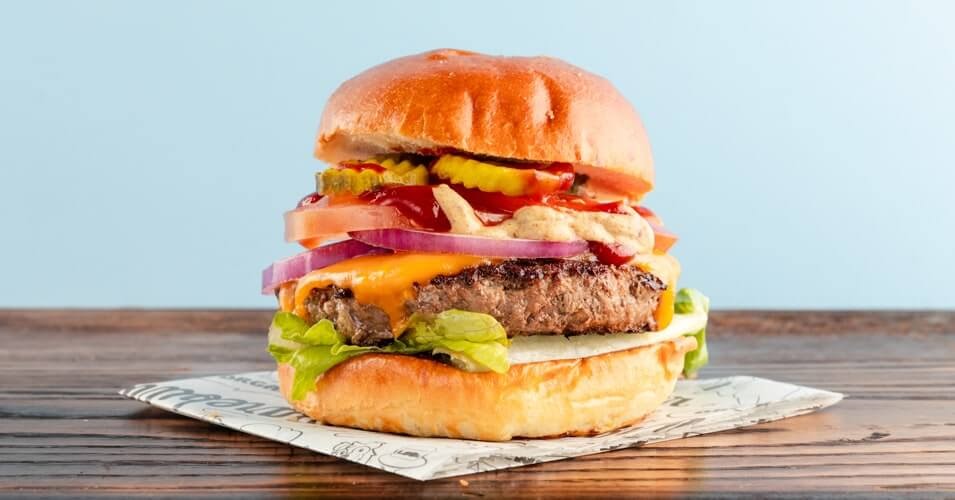
Still looks delicious. Source: Bareburger.com
Blending the meat with vegetables may not always lead to a delicious concoction. Consider adding vegetables and fruits as side dishes so customers can still consume healthy food.
2. A radical revamp of the ‘Kids’ Menu’
Theme: More Conscious & Healthier Eating
According to Insider, 80% of millennials will have children by 2026.
Since their parents love to eat healthy and organic ingredients, they want their children to eat the same. Expect funky yet healthy food like organic chicken nuggets, salmon fish sticks and sushi for kids.
Via Instagram: Isu Sushi features their new #sushiforkids offering
Kids love food with unique shapes and colors. If you can appeal to their palates, then you’ll eventually make their parents impressed.
3. Greater Offering for Home Meal Kits and Meal Delivery Options
Theme: More Conscious & Healthier Eating
Millennials want to eat homemade dishes but they don’t have time to buy fresh ingredients and make time for food prep. As a result, Blue Apron and Hello Fresh have grown exponentially over the past few years, as have Meal Delivery options like YouFoodz.
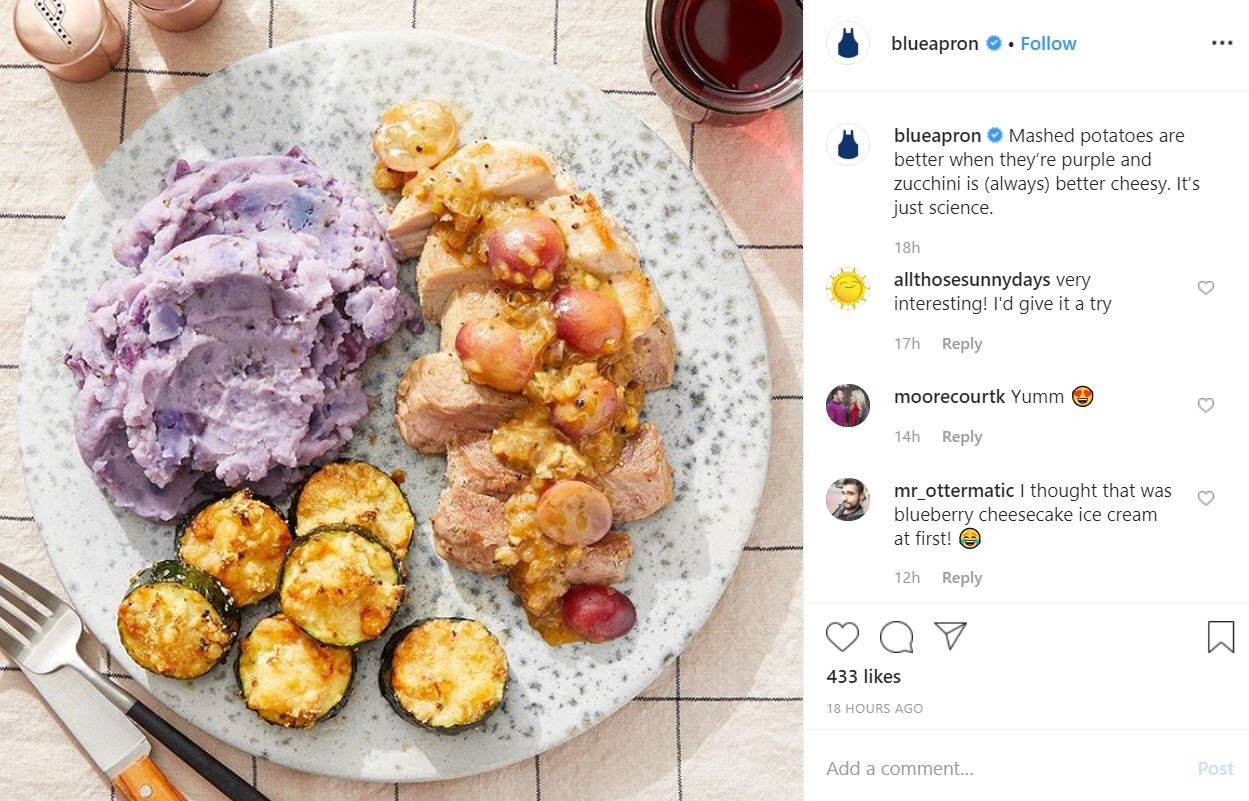
Blue Apron’s Instagram featuring a healthier home meal kit
With home meal kits, customers can get quality ingredients at perfectly-portioned amounts. No need to be an expert chef, because amateur cooks can easily follow step-by-step instructions. Additionally, home meal kits allow a greater degree of customisation to suit personal dietary preferences and allergies.
4. Limited-time offers and engagement generate reasons for customers to come
Theme: Restaurant Experience Redefined, Digital Dining
We bet you’re no stranger wacky food combinations because they often go viral.
McDonald’s and Starbucks often introduce special limited-time dishes like the Cheesy Bacon Fries and Witches’ Brew Frappuccino. The internet went crazy over bacon and the Starbucks’ Halloween-themed frappuccino.
Via IG: A fan sharing Starbuck’s limited-edition Witch’s Brew drink for Halloween
Customers frequented the restaurant since it was available for a limited time only. Since they’re not around forever, customers mark their calendars and grab them as soon as possible. In fact, 64% of the top 500 restaurant and retail chains increased their limited-time menu items for the past five years.
5. Takeout brings restaurants to customers
Theme: Restaurant Experience Redefined
No one wants to endure the traffic to eat in their favourite restaurants.
Restaurants have started to pack food into delivery boxes and get them delivered through services like UberEats, Deliveroo or Grabfood. A good meal can certainly bring a family together, but some may prefer to enjoy it in the comfort of their own home.
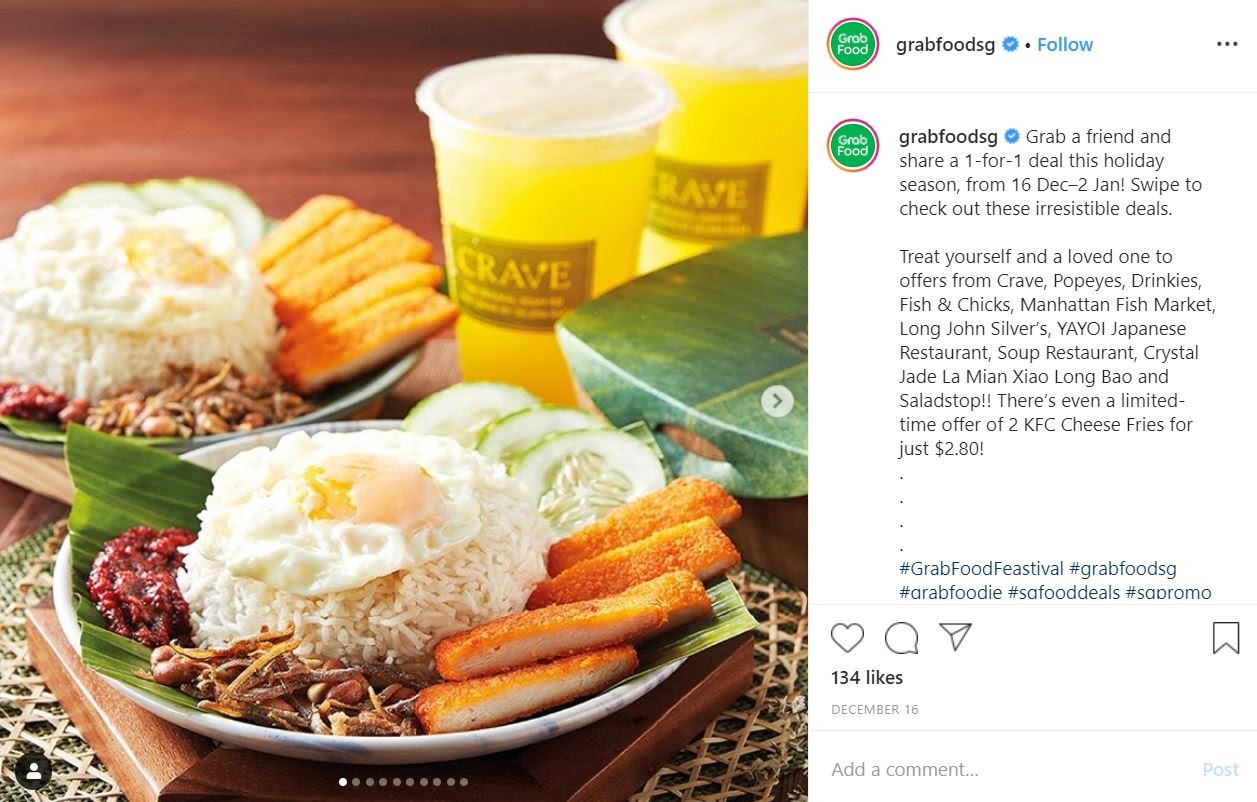
Via IG: Grabfood offering a full menu of restaurant deliveries
6. Digital engagement – promotional blasts and loyalty programs
Theme: Digital Dining
Rewarding customers for frequenting your restaurants is how you build customer retention.
Domino’s Pizza and Chick-Fil-A have dominated the market by incentivizing customers to return through digital loyalty programs. After all, who doesn’t want to receive a free menu item or a discount for patronizing a brand?
The data shows that loyalty programs have been so successful. A study found that loyalty program members buy 20% and more frequently. Additionally, engaged loyal customers spend 60% more.
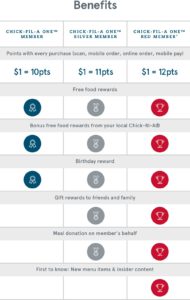
Chick-Fil-A’s Loyalty Program is extremely popular
How to get started? You can use Candybar – a digital punch card loyalty program – to jump into the bandwagon and create your own loyalty program.
7. Cashless shopping and robot chefs for efficiency
Theme: Restaurant Experience Redefined
A unique experience doesn’t always have to involve funky and weird food combinations.
Some customers visit restaurants that offer fast and convenient service. This is apparent in the surge of restaurants and food stalls that are accepting card-only payments.
Other companies are pushing restaurants into new heights by introducing fully-automated robot chefs. They can clean the kitchen, perform repetitive tasks and finish faster than a human employee.
Flippy – a robot with a mechanical arm and 3D thermal scanners for eyes – can flip burgers and fry 80 baskets of food per hour. Plus, they can clean up their mess afterwards.
A robot pasta chef. Via @DaVinci_Kitchen IG
While restaurants may not replace their entire staff with robots (yet), we predict that restaurants that offer a fast and convenient experience are bound to get ahead. Even smaller cafes and outlets have started to use punch card apps to reward their customers.
8. Reducing plastic use for sustainability
Theme: Restaurant Experience Redefined, More Conscious & Healthier Eating
In 2019, we’ve seen countless F&B companies phase out plastic cutlery, styrofoam containers and other non reusable products.
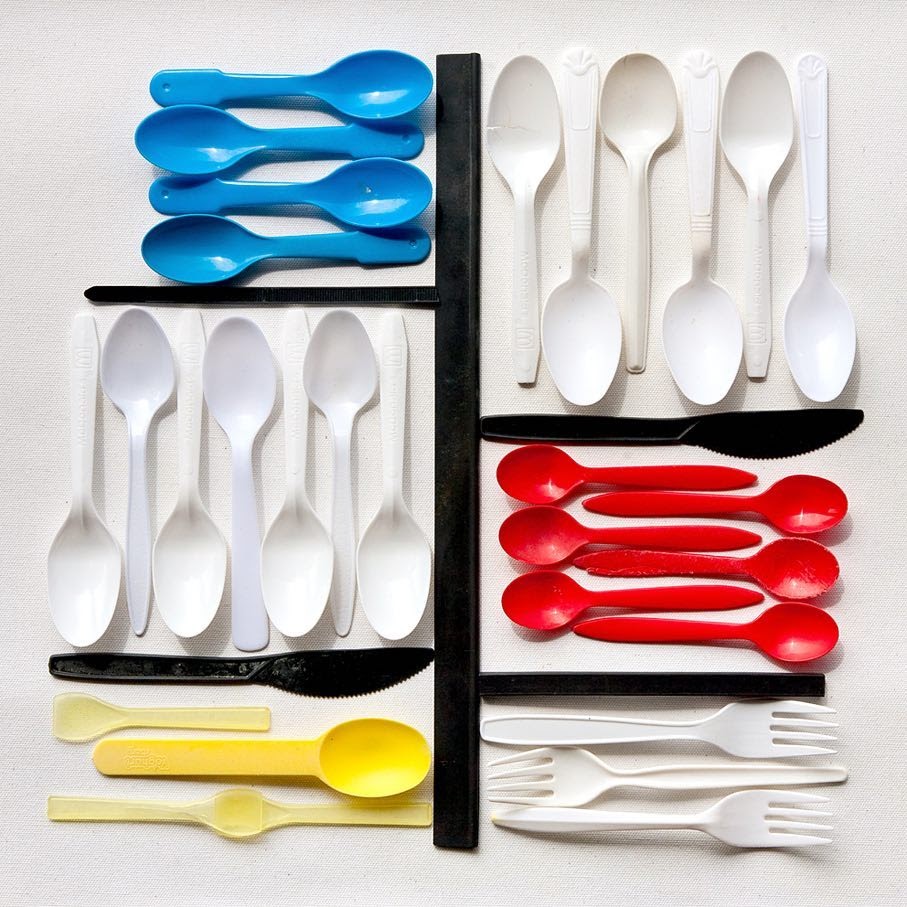
Plastic waste on the New Zealand shore. Via @cleancoast_kiwi IG
According to Gallup, 67% of people aged 18 to 29 and only 49% of those aged 30 to 49 believe global warming is real, man-made and a serious threat. As a result, millennials support restaurants that want to reduce plastic waste and straws.
A small action can go a long way into sustaining our environment. So, millennials are likely to patronize sustainable restaurants with plastic-free policies.
9. Pop-up bars and visiting chefs
Theme: Restaurant Experience Redefined
The rise of themed restaurants, pop-up bars, and visiting chefs prove the importance of experiential dining.
Customers want to watch visiting chefs churn out their signature dishes from an exclusive menu once a week or monthly. They want to visit Pokemon, Hello Kitty and Harry Potter cafes to relive their childhood. They don’t want to visit any traditional restaurant, instead they prefer creative and memorable experience with their loved ones.
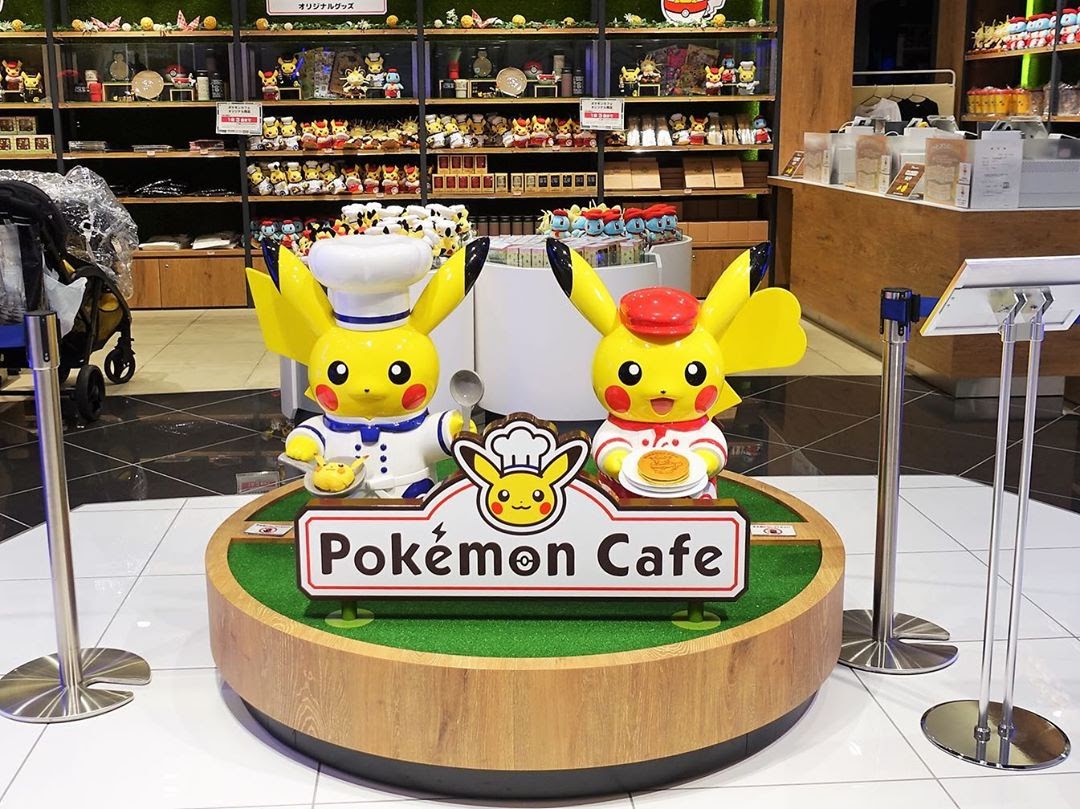
The Pokemon Cafe in Japan. Via IG
To jump into the bandwagon, host events in your restaurants. Invite visiting chefs and get attendees to try out new dishes.
How will you improve your restaurant in 2020?
Restaurants that know the latest trends will ultimately reap the benefits.
To get on your customers’ radar, offer a healthy menu filled with fruits and vegetables. If you manage to make kids eat healthily, then you’ll impress their parents too.
Host events and invite visiting chefs because people value unique experiences. Make the experience more convenient by offering your own delivery service or hiring a robot chef to boost efficiency.
Got any tips for improving your restaurant in 2020? Let us know in the comments below.


